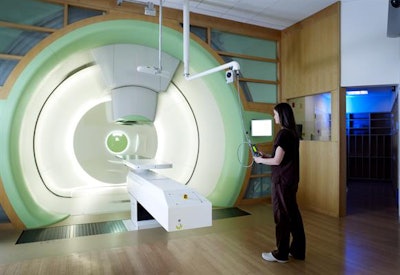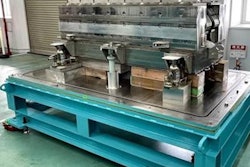
Children with cancer who are treated with proton therapy had better outcomes with less morbidity, according to a pair of new studies published September 12 by researchers from the University of Pennsylvania.
Proton therapy differs from traditional photon-based radiation therapy in that it directs positively charged protons at tumors, where they deliver most of their radiation dose without hitting surrounding healthy tissue. But proton therapy can be much more expensive than traditional radiation therapy.
The studies published today underscore the value of proton therapy in children, who due to their young age are more vulnerable to the side effects of traditional radiation therapy. Both studies were led by Dr. Christine Hill-Kayser of the university's Perelman School of Medicine. Hill-Kayser is a pediatric oncologist at Children's Hospital of Philadelphia.
 A proton treatment room at Roberts Proton Therapy Center at the University of Pennsylvania. Image courtesy of the University of Pennsylvania.
A proton treatment room at Roberts Proton Therapy Center at the University of Pennsylvania. Image courtesy of the University of Pennsylvania.The first study, published in Pediatric Blood & Cancer, focused on newly diagnosed cases of medulloblastoma in children. Usually, older children with medulloblastoma receive radiation to the entire brain and spine; children younger than age 4 receive chemotherapy rather than radiation. Both treatment strategies have disadvantages, such as side effects and relapse, however.
Researchers performed a study in which proton therapy was used in 14 children after surgery and chemotherapy. Their five-year overall survival rate was 84%, while the rate of recurrence-free survival was 70%. This compares to historical survival rates of 30% to 60% in very young children who do not undergo radiotherapy.
The authors noted that the findings indicate the advantages of treating just the target area of surgery, as opposed to the entire brain and spine (although they noted that the small size of the patient cohort necessitated further research).
In the second study, published in Acta Oncologica, researchers used proton therapy in combination with pencil-beam scanning in a group of 166 children with tumors of the central nervous system. At 24 months after treatment, only 0.7% of the patients had experienced brainstem tissue damage from the technique, a rate much lower than toxicity reported with older techniques such as double-scattered proton therapy.



















